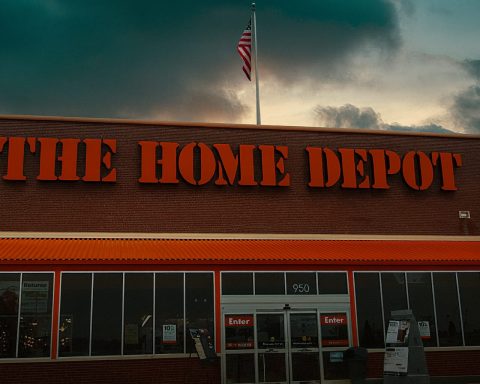Australia’s customer‑owned banking sector took two big steps forward on 24 November 2025, as Bank Australia completed its acquisition of Australian Unity Bank’s operations and members of Summerland Bank and Regional Australia Bank formally backed a merger that will create a $5 billion regional mutual. [1]
These moves cap a year of intense consolidation among mutuals and cement Bank Australia’s position at the centre of a rapidly reshaping cooperative banking landscape. [2]
Bank Australia seals Australian Unity Bank deal
Bank Australia has now formally taken over Australian Unity’s banking business, completing a transaction first announced in November 2024 and timed to go live on Monday 24 November 2025. [3]
According to Bank Australia and industry reports, the transfer brings roughly 25,000–29,000 Australian Unity banking customers, along with about $1.5 billion in loans and $1.7 billion in deposits, onto Bank Australia’s balance sheet. [4]
Mortgage Professional Australia reports that the deal lifts Bank Australia’s total customer base to more than 320,000 people nationwide, underscoring how quickly the mutual has grown via mergers over the past two years. [5]
The acquisition follows Bank Australia’s 1 July 2025 merger with Qudos Bank, which created one of the country’s largest customer‑owned banks with around 300,000 customers, $17.5 billion in assets and roughly 900 employees, operating a 15‑branch network across New South Wales, Victoria, Queensland and the ACT. [6]
With Australian Unity’s banking arm now folded in, Bank Australia is positioning itself as a scaled, purpose‑driven alternative to the big four, emphasising customer ownership, climate action and social impact alongside conventional banking services. [7]
Why Australian Unity exited banking
For Australian Unity, the transition marks the end of a relatively small but capital‑intensive banking business that had recently swung into the red.
In October, industry outlet Banking Day reported that Australian Unity Bank recorded an after‑tax loss of $2.7 million in FY2025, compared with a profit of $731,000 the previous year – one of the largest losses seen among mutual banks in recent times. [8]
The same report noted that the transfer to Bank Australia would include around 25,000 customers and a combined loan and deposit book worth more than $3.2 billion, underlining how significant the bank has become relative to Australian Unity’s other operations. [9]
Australian Unity has repeatedly framed the sale as a strategic refocus on its broader wellbeing businesses – including health, aged care and investment products – while ensuring its banking members land with a like‑minded mutual that shares its community‑oriented ethos. [10]
What the transition means for former Australian Unity customers
Bank Australia’s dedicated Australian Unity transition hub outlines extensive practical changes taking effect from 24 November 2025. [11]
New details and digital access
From today:
- New customer and membership numbers: Every Australian Unity banking customer receives a new Bank Australia membership or customer number. [12]
- New BSB and account numbers: Transaction, savings, term deposit, home loan, personal loan and credit card accounts are being renumbered under Bank Australia’s BSB and account formats. Existing direct debits and credits are expected to continue without customer action. [13]
- Internet and mobile banking: Customers can register for Bank Australia’s internet banking and app using their updated credentials from 24 November, following a short cut‑over period that ran from close of business Friday 21 November. [14]
Bank Australia has warned of longer call‑centre wait times around the transition date, reflecting the volume of customers seeking support as systems and credentials change. [15]
Deposit protection and the Financial Claims Scheme
One of the most important – but less visible – changes is how deposits are treated under the Australian Government’s Financial Claims Scheme (FCS).
Bank Australia explains that, from 24 November, deposits held with Australian Unity Bank and Bank Australia are treated as being with a single authorised deposit‑taking institution for FCS purposes. That means: [16]
- Deposits are protected up to $250,000 per customer, per authorised bank in total, not separately at each former institution.
- Customers who previously held significant balances at both banks may now need to review their combined exposure if it exceeds the $250,000 cap.
The bank is directing customers to its FCS explainer and encouraging anyone with substantial savings to seek independent advice if they are unsure how the guarantee applies in their situation. [17]
Other key changes
Additional updates highlighted in Australian Unity and Bank Australia materials include: [18]
- Daily transaction limits: Many customers will see revised daily payment limits, which can be adjusted within Bank Australia’s app and internet banking.
- Open Banking consents: Data‑sharing permissions granted under the Consumer Data Right do not automatically transfer. Customers who share banking data with budgeting apps or fintechs will need to re‑authorise those connections once they are live on Bank Australia systems.
- Member status: Banking customers without other Australian Unity products will cease to be members of Australian Unity Limited and instead become members of Bank Australia.
In short, the transition offers access to a larger mutual with more extensive digital capability and branch coverage, but it also demands attention to new account details and regulatory settings such as Open Banking and deposit insurance. [19]
Summerland Bank and Regional Australia Bank members back $5bn merger
While Bank Australia was integrating Australian Unity, members of Summerland Bank and Regional Australia Bank have overwhelmingly approved a merger to create a $5 billion regional mutual, scheduled to take effect on 1 July 2026. [20]
At Annual General Meetings held last week, more than 96% of voting members at each bank supported the deal. Summerland members met on 19 November in Lismore, followed by Regional Australia Bank members on 20 November, both delivering resounding “yes” votes. [21]
The combined organisation will:
- Manage over $5 billion in assets
- Serve around 130,000 customers/members
- Operate 49 branches across regional New South Wales and southern Queensland [22]
No branch closures or job losses promised
Crucially for regional communities that have seen a steady retreat of major banks, both institutions have committed there will be no branch closures or staff redundancies as a direct result of the merger. Services are expected to continue across all existing locations, with management emphasising that increased scale should support, not shrink, the physical network. [23]
Summerland and Regional Australia executives argue that a larger mutual will be better placed to fund modern technology, meet regulatory demands and offer “sharper pricing” and a wider product range, while maintaining personalised service and a strong local presence. [24]
Regulatory green light already secured
The member votes follow Australian Prudential Regulation Authority (APRA) approval of the proposed merger in late August 2025, clearing the way for customers to have the final say. [25]
Regional Australia Bank has previously told members that at least 75% of those voting needed to back the proposal for it to proceed – a threshold easily surpassed by the 96%‑plus support recorded at both AGMs. [26]
Initially, both banks intend to retain their existing brands, with any future rebranding to be considered only after the new entity is bedded down – a strategy similar to other recent mutual mergers such as Greater Bank/Newcastle Permanent and Heritage Bank/People’s Choice. [27]
A broader wave of mutual bank consolidation
Today’s announcements sit within a much larger shift across Australia’s customer‑owned banking segment.
- On 1 July 2025, Bank Australia and Qudos Bank completed their merger, transferring all Qudos assets and liabilities to Bank Australia while continuing to operate both brands. [28]
- Ratings and industry analyses note that, after absorbing Qudos and Australian Unity, Bank Australia will see its capital ratios dip modestly but remain solid, reflecting a strategy of growth through carefully managed mutual mergers. [29]
- In parallel, other mutuals are exploring scale‑building deals: Great Southern Bank and P&N Group, for example, have signed a Memorandum of Understanding for a potential $30 billion customer‑owned giant, with a member vote expected in 2026. [30]
At the same time, consolidation is often accompanied by branch rationalisation, particularly among larger mutual and commercial banks. Earlier this year, People First Bank – formed from the merger of Heritage Bank and People’s Choice Credit Union – announced the closure of 18 branches, drawing strong criticism from the Finance Sector Union and regional communities worried about reduced access to face‑to‑face banking. [31]
Against that backdrop, the explicit pledges from Summerland and Regional Australia Bank to keep all branches open, and Bank Australia’s emphasis on an expanded branch footprint post‑Qudos, are likely to be closely watched by customers and policymakers alike. [32]
What it means for customers, staff and communities
For former Australian Unity Bank customers
For customers who woke up this morning as Australian Unity bankers and will go to bed as Bank Australia members, the transition brings both new opportunities and new responsibilities:
- Access to a broader product set, stronger digital channels and a larger contact‑centre and branch network, thanks to Bank Australia’s post‑Qudos scale. [33]
- The need to keep track of new account numbers and login credentials, especially for payroll, billers and connected budgeting apps. [34]
- A requirement to reassess deposit insurance coverage if they hold large balances, as FCS protection now applies to their combined holdings with Bank Australia rather than separate caps at two institutions. [35]
Bank Australia and Australian Unity have published detailed transition booklets and FAQs, and customers are being urged to use official contact channels if they receive unexpected calls or texts, amid reports of scam attempts piggybacking on the merger. [36]
For Summerland and Regional Australia Bank customers
For Summerland and Regional Australia Bank members, little will change immediately:
- Existing accounts, cards and branch relationships continue as usual, with integration work running behind the scenes ahead of the 1 July 2026 “day one” of the merged entity. [37]
- Management is promising no forced job losses or branch closures, at least as part of the merger process itself. [38]
- Over time, customers can expect new products, potentially sharper rates and more resilient technology, funded by the economies of scale that come from a larger balance sheet. [39]
For regional communities from the Northern Rivers to the New England tablelands, today’s vote is being framed as a proactive attempt to strengthen local banking before external pressures force more painful cuts or takeovers. [40]
Key dates at a glance
- 24 November 2025 – Australian Unity Bank customers transition to Bank Australia; Australian Unity’s banking business ceases to operate under its own brand. [41]
- 19–20 November 2025 – Summerland Bank and Regional Australia Bank members vote, with more than 96% support recorded at each AGM. [42]
- 1 July 2025 – Bank Australia and Qudos Bank merger takes effect. [43]
- 1 July 2026 – Targeted implementation date for the Summerland/Regional Australia Bank merger, subject to completion of integration work. [44]
The bigger picture
Today’s developments confirm that scale is becoming critical even in the customer‑owned part of Australia’s banking system. Rising technology costs, cyber‑security requirements, regulatory expectations and competition from larger institutions are pushing smaller mutuals to band together rather than battle alone. [45]
For customers, the challenge will be ensuring that the mutual model’s traditional strengths – community focus, face‑to‑face service and long‑term relationships – survive the rush for size. Bank Australia’s Australian Unity integration and the planned Summerland–Regional Australia Bank combination will be key test cases for whether bigger can still mean “more local, not less”. [46]
References
1. www.mpamag.com, 2. www.bankingday.com, 3. www.australianunity.com.au, 4. www.bankingday.com, 5. www.mpamag.com, 6. www.bankingday.com, 7. en.wikipedia.org, 8. www.bankingday.com, 9. www.bankingday.com, 10. www.australianunity.com.au, 11. www.bankaust.com.au, 12. www.australianunity.com.au, 13. www.bankaust.com.au, 14. www.bankaust.com.au, 15. www.bankaust.com.au, 16. www.bankaust.com.au, 17. www.bankaust.com.au, 18. www.bankaust.com.au, 19. www.bankaust.com.au, 20. www.mpamag.com, 21. www.mpamag.com, 22. www.mpamag.com, 23. www.mpamag.com, 24. www.stafm.com.au, 25. www.regionalaustraliabank.com.au, 26. www.regionalaustraliabank.com.au, 27. www.mpamag.com, 28. www.qudosbank.com.au, 29. asianbankingandfinance.net, 30. www.couriermail.com.au, 31. www.news.com.au, 32. www.bankingday.com, 33. www.bankaust.com.au, 34. www.bankaust.com.au, 35. www.bankaust.com.au, 36. www.bankaust.com.au, 37. www.mpamag.com, 38. www.mpamag.com, 39. www.savings.com.au, 40. ballinanewsdaily.com.au, 41. www.bankaust.com.au, 42. www.mpamag.com, 43. www.qudosbank.com.au, 44. www.mpamag.com, 45. asianbankingandfinance.net, 46. www.mpamag.com










